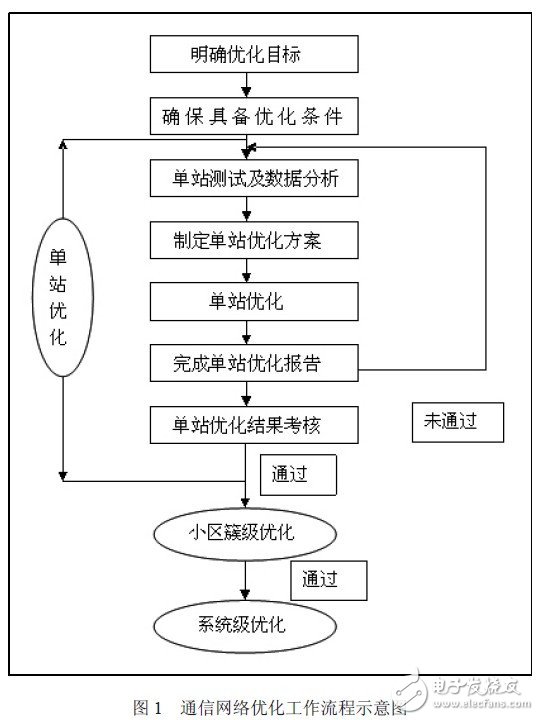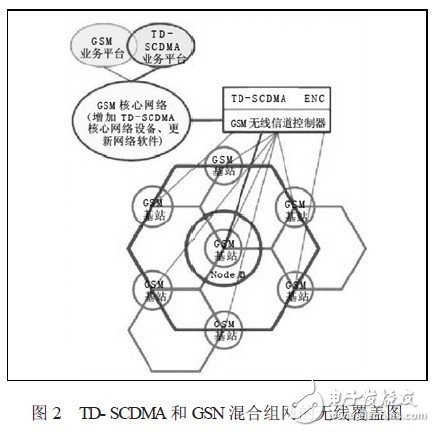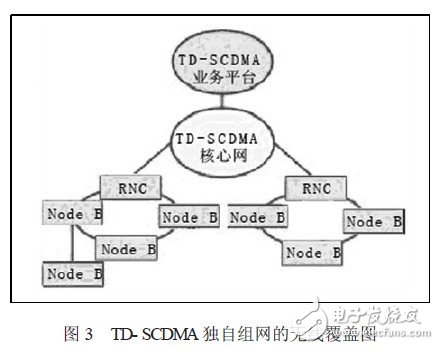TD-SCDMA is China's third-generation mobile communication standard. Compared with Telecom's CDMA2000 and China Unicom's WCDMA, mobile TD-SCDMA is a relatively late start in three 3G standards. The advantage of TD-SCDMA is to obtain government. Supported China's own 3G network; CDMA2000 has the advantage of low construction cost and direct upgrade from previous CDMA1X to 3G; WCDMA has the advantage of high spread spectrum gain, large development space, mature technology and strong global roaming capability. . TD-SCDMA network optimization has become an important direction for TD-SCDMA network operation. With the continuous optimization of communication technology, people's requirements for network service quality are getting higher and higher. I hope that TD-SCDMA network can serve anywhere and enjoy the convenience brought by the network. Therefore, we must Continuously optimize the communication network and continuously solve the problem of TD-SCDMA network coverage, so as to better let people feel the service and convenience brought by TD-SCDMA network coverage.
First, the concept of communication network optimization
Communication network optimization mainly refers to improving the signal performance change between mobile phones and base stations in the environmental interface. The communication network is a constantly changing network, the environment used by the communication network, the entire structure layout, the distribution of users, and the continuous improvement of network technology. With uncertainty, the main purpose of communication network optimization is to adjust the parameters of the base station and the network structure to improve the poor network conditions. Network engineering optimization refers to the staged optimization of the newly constructed network. Dimensional optimization refers to the optimization of the network after the end of the network engineering to improve the quality of the communication network.
Second, the communication network optimization process
Communication network optimization is a system engineering that runs through the entire process of network development. Its purpose is mainly to improve the environment of system software and hardware. Communication network optimization mainly adjusts various parameters of the project, performance parameters and resource configuration, so that the entire network can meet the target requirements, but because the network technology, environment, users and other factors are constantly changing, the corresponding target requirements are also changing. Therefore, communication network optimization is a continuous long-term work process. Communication network optimization In addition to a reasonable division of labor, the development of an efficient organizational structure, and preparation for the early stage, the process is mainly divided into the following steps.
(1) Investigate the network status. First collect data with overall operational and engineering conditions representing the current network conditions, then analyze and compare them to identify the objects that need to be optimized, and prepare for collecting more abundant data and doing more in-depth analysis. (2) Collect data. The content of communication network optimization data collection can be mainly divided into two categories: "network test data"; "system data". Various test methods or devices can be used to detect the performance quality of a targeted multi-network. (3) Formulate an optimization plan. The network test data and system data collected are analyzed and analyzed, and a reasonable optimization plan is developed based on the current network operation status and engineering conditions. (4) Testing and implementing optimization programs. Conduct specific tests on the developed optimization plan, if there is anything wrong, make timely adjustments, then test, and constantly adjust and update, so that the quality of the communication network is really improved and maintain the best running state. Figure 1 is a schematic diagram of the communication network optimization workflow.

Third, TD-SCDMA network introduction
The TD-SCDMA network is suitable for providing large-capacity voice, data and multimedia services in areas with dense urban population. The TD-SCDMA system has unique advantages in terms of utilization, flexibility, and diversity of service support. The uplink and downlink channel characteristics of the TD-SCDMA system are basically the same, and the base station can estimate the uplink and the narrow according to the received signal. The TD-SCDMA has the advantage of using smart antennas to reduce interference and improve utilization. It can also set the ratio of uplink and downlink time slots, adjust the uplink and downlink data rates, and is more suitable for occasions where the uplink and downlink data ratios of Internet services are different, but this also adds complexity to the same frequency networking.
Fourth, research on TD-SCDMA network coverage
(1) TD-SCDMA wireless network coverage scheme: The radio access network is an important component of the TD-SCDMA network system. It covers a large number of key technologies. The radio access network system consists of base station equipment and wireless network management center. The wireless controller device is composed of three parts. There are two solutions for TD-SCDMA wireless network coverage. Because TD-SCDMA network planning can not build large-scale networks independently in the initial stage, you can choose to build a small-scale network with GSM. TD-SCDMA network can provide users with reliable and high-speed. The data service, so TD-SCDMA network users are also increasing, it will replace the GSM network in the future, and will become an independent communication network. The process of evolving from a hybrid network to an independent network can be implemented in a capacity expansion manner. Figure 2 and Figure 3 are diagrams of wireless network coverage schemes for hybrid networking and independent networking.


(2) TD-SCDMA wireless network coverage solution in large and medium-sized urban areas The voice call service density in large and medium-sized urban areas is relatively high. The narrow curved streets, dense high-rise buildings and indoor depth make the wireless communication environment complicated and the required data The business is relatively large, the website resources are tight, and the corresponding supporting facilities are relatively expensive, and the factors of capacity demand should also be considered. In the area coverage, to ensure the continuity of the UE when doing services, reduce dropped calls, and improve the quality of service of the network, it is necessary to ensure that there is no blind spot between the base station and the base station, and the antenna feed adjustment cannot achieve the expected effect or the antenna feed does not. When adjusting the room, consider adjusting the parameters such as reselection and switching algorithm threshold and hysteresis timer to control the coverage of the cell and switch the band to ensure normal signal coverage.
(3) Solution 1: For dense areas where demand data services are relatively large, indoor macro base stations are more suitable. Indoor macro base stations have large capacity, support 1 to 9 carriers, flexible configuration, easy smooth expansion, and Sectorized smart antennas and devices are relatively stable; for sites with tight site resources and need to establish stations quickly, you can use smart base stations that support smart antennas, compact and compact, support wall mounts, can operate indoors and outdoors, or use no equipment room. It is low cost, can be quickly deployed, and has an outdoor macro base station that can realize remote management and unattended environmental monitoring system. Because the scale of TD-SCDMA network construction is relatively large, the workload is gradually increasing, and human resources cannot keep up with the expansion of business, so the automation system has greatly helped it. Solution 2: For hotspots with rich fiber resources, the RF remote subsystem supporting the smart antenna can be used for continuous coverage because it is flexible and the system capacity is too large to effectively reduce the construction site. The quantity greatly reduces the cost per channel.
(4) TD-SCDMA network indoor coverage TD-SCDMA system uses optical fiber to transmit signals to every corner of the building that needs to be covered to realize its multi-channel indoor coverage scheme. This solution usually combines fiber and coaxial cable to ensure the coverage quality of the indoor network. Its advantages are: multi-channel space separation of RRU of TD-SCDMA system, which can isolate signal interference; TD-SCDMA baseband centralized placement enables capacity sharing between basebands; fiber optic in indoor coverage, RRU The device is placed nearby, which can reduce the loss and get rid of the burden on the system. The space isolation algorithm can effectively reduce the user's interference and make the coverage of the network signal achieve good results.
Automotive Fug Wire Tap,Fuse Tap Adapter,Cor Add A Circuit Fuse Tap,Inline Fuse Holder
Dongguan Andu Electronic Co., Ltd. , https://www.idofuseholder.com
